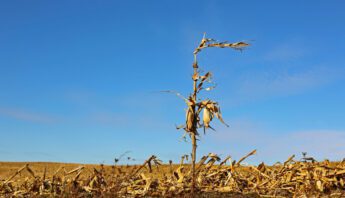My kids had a great baseball season playing in Little League this Spring. We've now moved on to other summery things like swim lessons in Berkeley's freezing fog. So I was caught off-guard by last week's surprise collision between my work and home worlds, namely the revelation that USDA has just given Scotts Miracle Gro (the lawn chemical company and much decried sponsor of Major League Baseball), the go-ahead for a new and once again totally unnecessary genetically engineered product: Roundup Ready lawn grass. And they may have pulled off a de facto deregulation of all future GE products in the process.
Currently, non-genetically engineered Kentucky bluegrass is widely planted in residential lawns, as well as in baseball, soccer and football fields and golf courses around the country. With the arrival of GE Roundup Ready bluegrass, we can now expect a deluge of the weedkiller, Roundup, almost everywhere we turn. That’s bad news; Monsanto’s top-selling herbicide has already been linked to birth defects along with a host of other health and environmental harms.
Yet another invasive 'superweed'
And what about when that grass turns into a pernicious weed? Last year, a GE bentgrass — developed by Monsanto and Scotts Miracle Gro for use on golf courses — escaped experimental plots in Oregon and became established in miles of canals and fields. Impervious to Roundup, it could not be removed (other than the old fashioned way).
In 2004, EPA scientists published findings that GE bentgrass pollen could travel 13 miles and pollinate non-GE grasses, posing a serious invasive species threat. The U.S. Forest Service, Nature Conservancy, native plant societies and other environmental groups all raised the alarm, but were ignored.
De facto de-regulation of all GE?
The implications of the recent USDA decision go far beyond our native habitats, lawns and sports fields. In an interview with Mother Jones' Tom Philpott, Doug Gurian-Sherman of the Union of Concerned Scientists explained why this decision could release nearly all future GE products from any kind of USDA oversight at all.
You see, it turns out that the entire basis of USDA’s authority to regulate GE organisms at all depends upon a narrow interpretation of the 1950’s-era Plant Pest Act. Since most GE crops until recently have been engineered using bits of plant pathogens as “promoters” (essentially genetic on-switches), they are themselves considered “plant pests” and so require USDA regulation. This means the agency must conduct environmental impact assessments, among other things.
Gurian-Sherman calls this the “fig leaf” of USDA regulatory authority, which everyone — until now — had agreed to go along with: industry liked the appearance of being regulated; public interest advocates recognized that the plant pest argument — while thin — was the only available tool to force USDA to do something in the way of oversight; and USDA apparently enjoyed seeming to do its job. Until last week.
Enter Scotts Miracle Gro, with its new GE lawn grass. Explaining to USDA that it engineered the lawn grass without using plant pathogens this time, Scotts Miracle Gro argued that its product technically contained no plant pest parts and therefore did not need any regulatory oversight. And USDA agreed.
If this precedent stands, then many new GE crops that don’t use plant-based “promoters” will not need to undergo any kind of regulatory review. Scotts Miracle Gro, Monsanto, DuPont et al. can just dump their new GE products on the market at will.
The other big news is how USDA has gutted its own ability to regulate noxious weeds. Normally, a GE turf grass like bluegrass or bentgrass — particularly one that has been engineered to be resistant to herbicides — would be classified as a noxious weed threat. But now USDA states that it will only regulate the very worst of the noxious weeds (while the rest of the noxious weeds can just go, well, scott-free).
Whose rules?
As shocking as this latest maneuver is, it should come as no surprise. USDA has long been wanting to get out of the hot seat of regulating GE crops. As Bill Freese, senior scientist at the Center for Food Safety recently told us,
Clearly, the industry has decided now is the time to slough off regulation. Without regulation, lawsuits challenging GE crops will be much tougher to win. The latest decision sets the stage for field trials and commercial cultivation of most GE crops without any oversight at all — without any requirement for USDA or the public to be informed. USDA has been claiming for years they don't have authority to regulate in various ways, and this is the logical end point.
Is it any coincidence, Freese asks, that USDA is getting its legal advice from Ramona Romero, the agency’s general counsel who comes straight from DuPont?
Freese adds some revealing history:
At one point in 2007, USDA had proposed to make the overall process of genetic engineering the trigger for regulation. If they had followed through on that, it would have shut down the loophole they just used to avoid regulation of GE Kentucky bluegrass. But then, in 2008, USDA made an about face and instead proposed to let the biotech firms make their own decisions on whether their GE crops would even be regulated.
I asked Freese who was on deck at USDA at that time. Surprise! The person leading the decision process was Michael Wach, who joined USDA after various stints at biotech research firms, and who subsequently moved to BIO, “the world’s largest biotechnology organization.” (He's now at the U.S. Department of Energy.) My, that door spins fast!
Take action » Call your local parks authority and tell them not to plant GE lawngrass if/when it comes to market. (While you’re at it, ask them what herbicides they use and encourage them to go with a non-toxic IPM approach.) Our kids will appreciate it.








